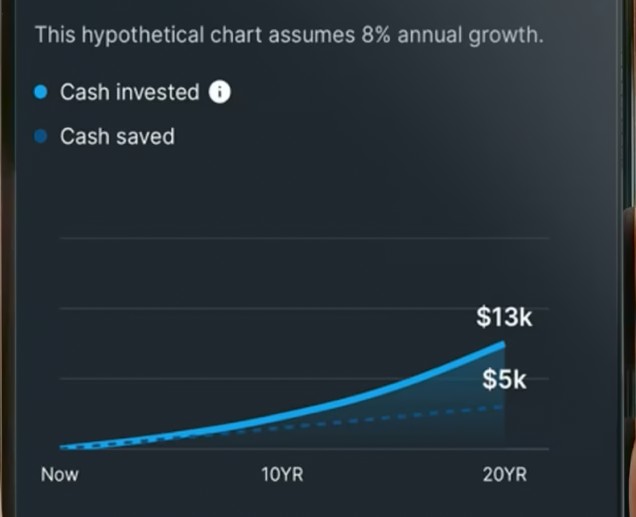Introduction: Why Choosing the Debt Snowball Method Matters in 2025
In today’s uncertain economy, where inflation and interest rates are squeezing household budgets, debt has become an emotional and financial burden for millions of Americans. If you’re waking up to the weight of credit card bills, personal loans, or student debt, know this: you’re not alone, and there is a way out.
Among the most effective strategies for getting out of debt in 2025 are the Debt Snowball Method and the Debt Avalanche Method. Both offer paths to freedom, but they work in fundamentally different ways—one taps into motivation, the other into mathematics.
Which one will work best for you? Let’s explore each method in depth and help you choose a strategy that aligns with your mindset, goals, and financial situation.
What Is the Debt Snowball Method?
The Debt Snowball Method is a debt repayment strategy focused on momentum. Instead of worrying about interest rates, you list your debts from the smallest balance to the largest. You pay the minimums on all but the smallest debt, which gets all your extra money until it’s gone. Then you move to the next smallest.
Step-by-Step Breakdown:
-
List your debts from smallest to largest balance.
-
Make minimum payments on all debts.
-
Throw all extra funds at the smallest debt until it’s paid off.
-
Take that payment amount and apply it to the next-smallest debt.
-
Repeat the process until you’re completely debt-free.
This method is called “snowball” because as you eliminate each debt, the payment you roll into the next one gets bigger—just like a snowball rolling downhill.
Why the Debt Snowball Method Works Emotionally
Psychologically, the Debt Snowball Method offers powerful early wins. Seeing a balance hit zero—even a small one—creates momentum. That immediate sense of achievement builds confidence and encourages you to keep going.
“When I paid off my first $400 credit card, I cried. It was the first time I felt like I was winning with money.” — Jessica R., Michigan
If you’ve struggled to stay consistent with past budgets or repayment plans, these small victories can be the key to long-term success.
Pros and Cons of the Debt Snowball Method
Pros:
-
Quick wins build motivation.
-
Simple and easy to follow.
-
Encourages positive financial behavior.
-
Ideal for people who need emotional momentum.
Cons:
-
May result in paying more interest over time.
-
Not the fastest method in terms of overall financial savings.
What Is the Debt Avalanche Method?
In contrast, the Debt Avalanche Method is designed for mathematical efficiency. Instead of focusing on the smallest balances, you rank your debts by interest rate—highest to lowest. You put all your extra money toward the debt with the highest interest, saving money over time.
Step-by-Step Breakdown:
-
List all debts by interest rate, from highest to lowest.
-
Pay minimums on all debts.
-
Focus extra payments on the highest-interest debt.
-
Once that’s paid off, roll the payment into the next highest interest debt.
-
Continue until all debts are gone.
This strategy saves the most in interest and often results in faster total payoff, even if it feels slower at the start.
Pros and Cons of the Debt Avalanche Method
Pros:
-
Saves more money over time.
-
Reduces total interest paid.
-
May shorten total payoff timeline.
Cons:
-
Slower emotional rewards.
-
Can feel discouraging if progress isn’t visible early on.
-
Requires discipline and tracking interest rates.
Snowball vs Avalanche: A Side-by-Side Comparison
| Feature | Debt Snowball Method | Debt Avalanche Method |
|---|---|---|
| Payoff Order | Smallest balance to largest | Highest interest rate first |
| Emotional Benefit | High | Moderate |
| Long-Term Cost | Higher | Lower |
| Motivation | Immediate | Delayed |
| Complexity | Very simple | Requires more tracking |
| Best For | Emotional motivation | Financial optimization |
Real-Life Success Stories
Sarah, 29, Seattle – Debt Snowball Success
Sarah had five debts totaling $23,000. Her smallest was a $900 store card. Using the Debt Snowball Method, she tackled the smallest first and watched her motivation grow.
“Seeing one card go to zero made me believe I could do it. Eighteen months later, I was debt-free. It changed my life.”
Mark & Lisa, 40s, Texas – Avalanche Efficiency
Mark and Lisa were juggling $62,000 in debt, including a high-interest personal loan at 22%. They used the Avalanche Method and knocked out their most expensive debts first.
“We saved over $4,000 in interest by choosing avalanche. It wasn’t as emotionally exciting at first, but seeing our total interest go down was incredibly motivating.”
What the Experts Say
Angela Rivera, CFP
“For clients who need quick wins, the Debt Snowball Method often leads to better long-term outcomes because it changes behavior. Emotional payoff is more important than people realize.”
David Chen, CPA
“If your goal is to save the most money and you’re financially disciplined, the Avalanche Method is your best bet. It works faster in many cases.”
Tina Morrison, Financial Therapist
“There’s no reason you can’t blend both. Start with snowball to build confidence, then switch to avalanche for savings. It’s a smart and balanced approach.”
Hybrid Approach: The Best of Both Worlds
Some experts and real-world users suggest starting with the Debt Snowball Method to build motivation, then switching to the Debt Avalanche Method to optimize interest savings.
Example Hybrid Strategy:
-
Pay off your two smallest debts first.
-
Once momentum builds, switch to tackling the debt with the highest interest rate.
-
Use an app to track both your progress and your total interest savings.
This approach balances the emotional need for quick wins with the financial benefit of minimizing interest.
Technology in 2025: Smart Tools for Smarter Debt Repayment
AI-powered financial apps are transforming how we tackle debt in 2025. Whether you prefer the Debt Snowball Method, Avalanche, or a hybrid, modern tools make it easier to stay on track.
Top Tools in 2025:
-
Undebt.me: Visualizes debt payoff using both methods.
-
YNAB (You Need A Budget): Helps with budgeting and prioritizing payments.
-
Tally: Automates credit card management and interest tracking.
These platforms not only provide financial insights but also emotional reinforcement, progress tracking, and even behavioral nudges to keep you going.
Questions to Help You Choose the Right Method
Ask yourself these questions to decide which path makes the most sense for your situation:
-
Do small wins motivate you to stay on track?
-
Choose the Debt Snowball Method.
-
-
Are you focused on minimizing total cost?
-
Choose the Debt Avalanche Method.
-
-
Are your debts mostly low balances or high interest?
-
If small balances, try Snowball.
-
If high interest rates dominate, try Avalanche.
-
-
Do you need help staying consistent over time?
-
Snowball offers more immediate reinforcement.
-
-
Can you manage multiple tools or track interest rates?
-
Avalanche requires more attention to detail.
-
The Emotional Impact of Being Debt-Free
Being debt-free isn’t just a financial milestone—it’s an emotional one. Many people report a sense of mental clarity and emotional peace when their last debt is paid off.
“I finally slept through the night after I paid off my last credit card. No more shame, no more stress—just freedom.” — Teresa B., New York
Debt weighs heavily, not just on your bank account but on your mental health. Whether you choose the Debt Snowball Method or another plan, the goal is the same: reclaim your peace and future.
Debt Repayment Trends in 2025
As we navigate 2025, a few debt repayment trends are taking center stage:
-
Hybrid strategies are becoming more popular.
-
AI-powered apps are offering custom repayment plans.
-
Financial literacy awareness is growing nationwide.
-
Debt consolidation and refinancing are widely used to lower interest rates.
Despite the challenging economy, people are more empowered than ever to take control of their finances—starting with choosing the right debt repayment method.
Final Thoughts: Which Method Should You Choose?
Choosing between the Debt Snowball Method and the Debt Avalanche Method is a personal decision. The right method is the one that keeps you committed, consistent, and emotionally supported.
-
If motivation and progress keep you going, Snowball is for you.
-
If interest and total savings matter most, Avalanche is the smarter pick.
-
If you want both? Start with one, blend in the other, and make it yours.
What matters most is that you start. Your path to financial freedom doesn’t begin with perfection—it begins with action.
Because the best debt payoff method is the one you actually follow.












